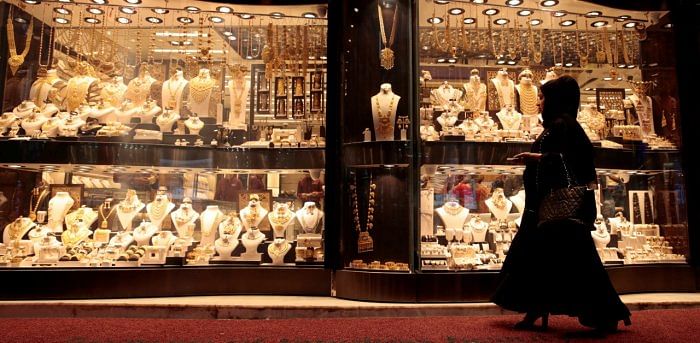
From receiving damaged gold items to delay in getting hallmarked jewellery from the assaying centres and imposition of an ID system on goods, jewellers are facing many challenges after mandatory gold hallmarking came into force from June 16 in a phased manner, jewellers' body GJC said on Wednesday.
The government has identified 256 districts from 28 states and union territories for phase-1 implementation of gold hallmarking.
Gold hallmarking, a purity certification of the precious metal, was voluntary in nature so far.
"We are ready for mandatory gold hallmarking but there are certain problems which small jewellers are facing. If these are not addressed, then the industry will be on the verge of complete collapse," All India Gem and Jewellery Domestic Council (GJC) Director Dinesh Jain told reporters.
A major problem being faced by jewellers is that they now have to upload on a Bureau of Indian Standards (BIS) portal a six-digit hallmark unique identification number (HUID) that is affixed with each hallmarked gold article, he said.
"This HUID system is extremely time consuming due to which Assaying and Hallmarking Centres (AHCs) are not able to hallmark more than 150 to 20 pieces per day," Jain said.
Both AHCs and the jewellers have to upload the HUID. Since it is a cumbersome, time-consuming process, there is delay in hallmarking at AHCs, which is further disrupting the entire supply chain and causing delays in the delivery of goods to consumers, he added.
The government introduced the HUID system as a component of hallmarking to ensure traceability of such certified articles in a bid to protect consumers from being cheated.
According to GJC, the HUID system must not be made applicable to jewellers. As followed earlier, the jewellers must be permitted to submit jewellery for hallmarking through delivery challan in accordance with Rule 55 of the CGST Rules, 2017.
AHCs, after completing the hallmarking process, should mark the jewellery appropriately. But the HUID number and the corresponding data should be maintained solely by AHCs and should not be transferred to the jewellers account on the BIS portal, it said.
Jain also said that since each jewellery has to sport a HUID that needs to be uploaded on the BIS portal, AHCs are testing the purity of each piece, instead of batches of 40 pieces as done earlier.
"This delay in hallmarking is affecting our business. We cannot deliver our goods timely to customers. What will happen during festivals and marriage season if this plight continues?" he said.
The existing stock of about 5 crore jewellery pieces are required to be hallmarked.
"At the current capacity of hallmarking centres, 1 lakh pieces per day, it will take around 500 days, equivalent to 18 months to hallmark the existing stock lying with jewellers," Jain said.
If so much time is taken for the old stock, then hallmarking new manufactured stock of 12 crore pieces would eventually lead to collapse of the industry, he added.
Maharasthra Sarafa Swarnakar Mahamandal President Fatehchand Ranka said since introduction of the mandatory hallmarking regime, 72 hallmarking centres have been either cancelled or suspended across the country.
"Previously, out of 933 centres, almost 450 centres were suspended. This shows that one out of two AHCs was either cancelled or suspended for contravention of law. How can we rely on such a system and such hallmarking centres and become victims of their failure?" he said.
Further, Ranka said the new marking system under the guise of HUID has been introduced to monitor hallmarking centres.
"...jewellers have been dragged into the administrative process of HUID, which has no relevance to purity," he said.
All India Bullion and Jewellers Federation President Yogesh Singhal said, "The current process followed by AHCs ends up in damaging certain finished products and leads to gold wastage, causing losses to the jeweller and inconvenience to the customer."
He said the government should adopt a non-destructive process for sampling and testing of jewellery, including a clear methodology for testing the non-homogeneous nature of the precious metal articles submitted by the jewellers.
If these new systems are imposed on jewellers, only a handful of corporates and large retailers can survive, while the rest will have no choice but to wind up their businesses, he added.